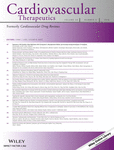Resveratrol promotes differentiation of mouse embryonic stem cells to cardiomyocytes
Summary
Aim
Embryonic stem cells (ESCs) are capable to differentiate into cardiomyocytes, with the potential to treat cardiovascular diseases. However, directed differentiation is still a challenge faced by scientists. As a natural substance in grapes, resveratrol (RV) is important for cardiovascular protection. The studies of RV and its effects on ESC differentiation have potential clinical applications.
Methods
Using mouse embryonic stem cells (mESCs), we investigated the effects of different concentrations of RV (5, 10, 20, 50, and 100 μmol/L) exposure on mESCs viability, expression levels of cardiac marker genes in embryoid bodies (EBs) derived from mESCs, expression levels of maturity indicative cardiac markers in cardiomyocytes derived from mESCs, and the beating properties of EBs.
Results
About 10 μmol/L of RV showed no toxicity on cell viability and was the optimal concentration to promote mESC differentiation, induce mESC differentiation to cardiomyocytes, and gain the beating properties of EBs.
Conclusion
RV can successfully direct the differentiation of mESCs into cardiomyocytes, shedding light on its future applications to treat cardiovascular diseases.




